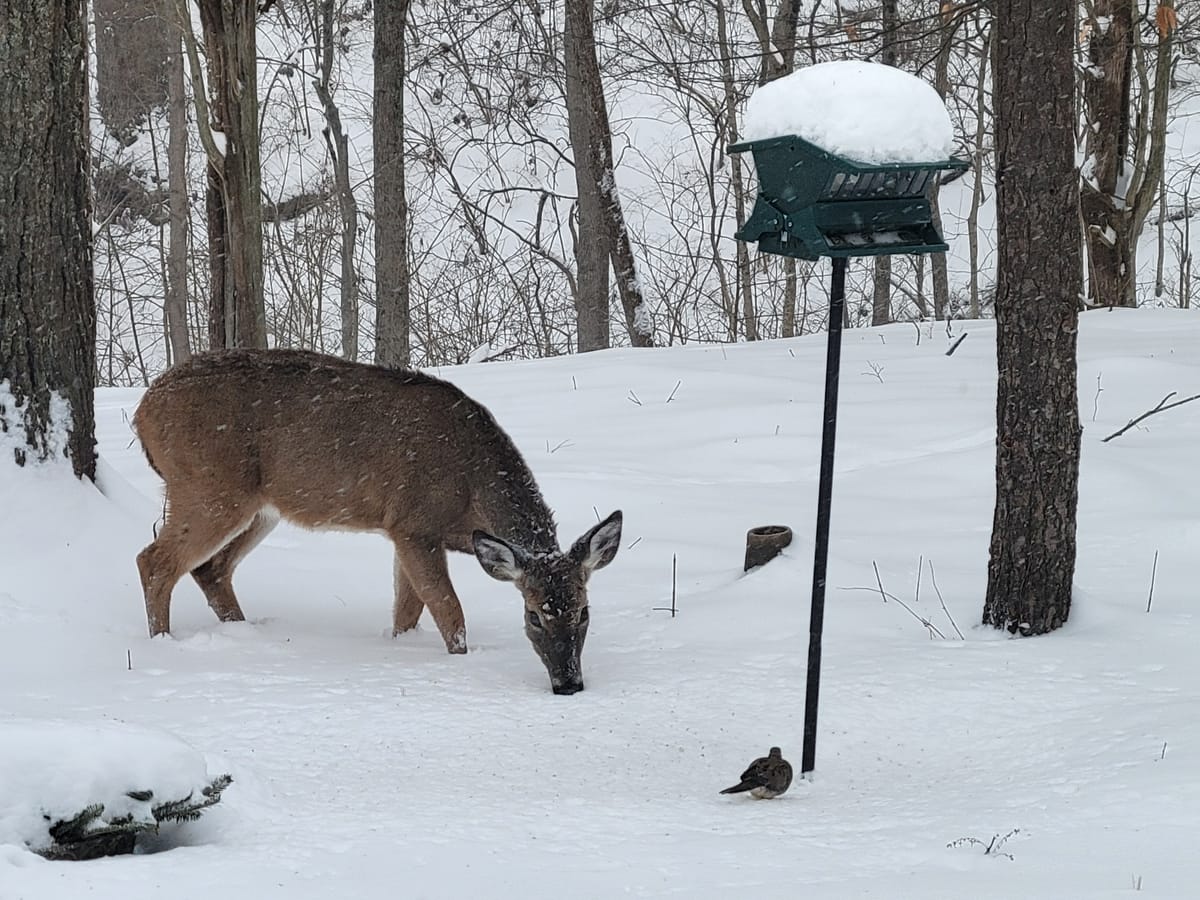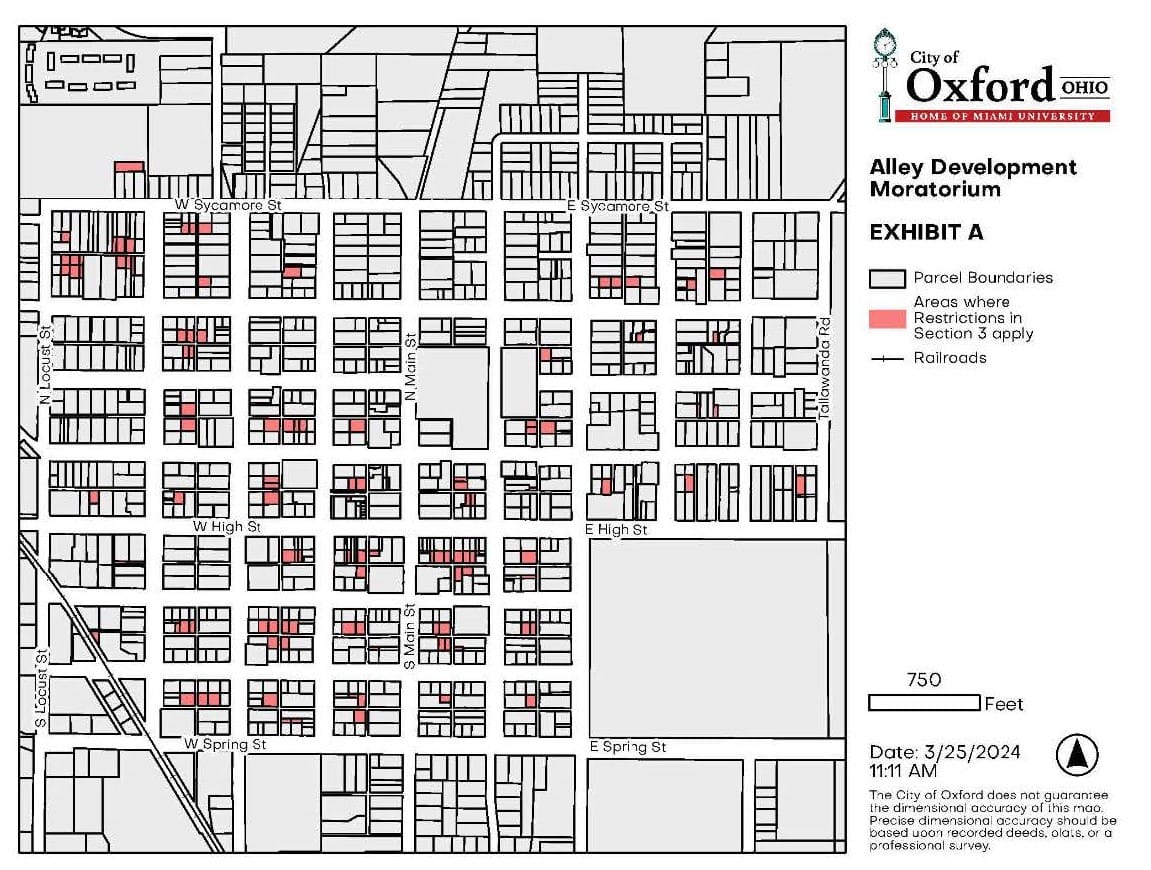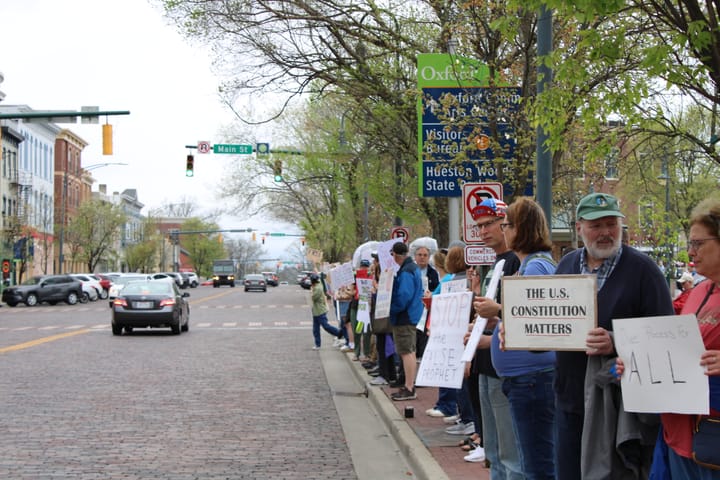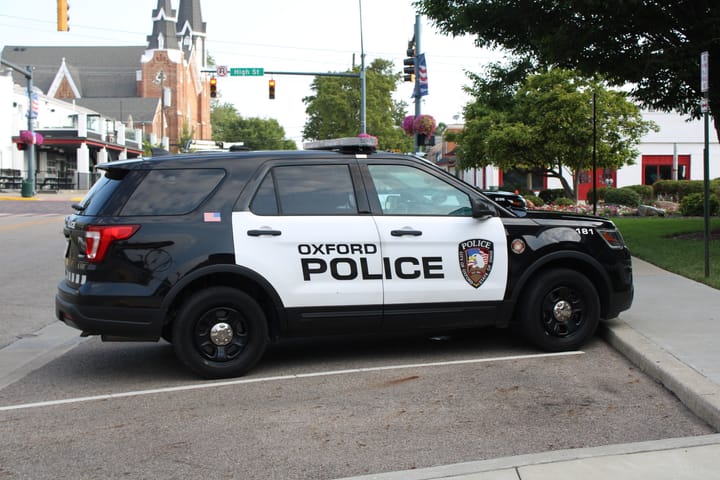Oxford extends alley development moratorium, considers further deer management actions
City Council has once again extended an alley lot development moratorium as the Planning Commission considers solutions to public service challenges posed by the lots.

Oxford City Council voted to extend an alley lot development moratorium once more and considered the creation of a task force to identify solutions to deer overpopulation during the first meeting of 2025 on Jan. 7.
Also during the meeting, the city swore in new police officer Wade Estes, a graduate of the Butler Tech Police Academy. Mayor Bill Snavely also issued a proclamation recognizing Martin Luther King Jr. Day on Jan. 20. Vanessa Cummings, vice president of the Oxford NAACP, said the organization will observe the holiday with an event at the Oxford Community Arts Center beginning at 10 a.m.
Alley development moratorium extended to March 20

City Council unanimously approved another extension of an alley lot development moratorium, this time until March 20. It was the first time the moratorium received unanimous support.
The moratorium was initially passed in April 2024 to allow the community development department to identify public service challenges posed by lots with alley frontage only and draft legislation to address these concerns before any additional construction took place. Mayor Bill Snavely dissented.
Last September, council members voted 5-2 to extend the moratorium to Jan. 16 after a lengthy discussion. Snavely and council member Mike Smith voted against the extension, and council member Amber Franklin said the city shouldn’t push the moratorium any further.
Community Development Director Sam Perry said at the time that the extension was necessary to give staff time to create zoning code amendments for council members to vote on regarding alley lots. The intention was to address issues including stormwater management, trash and recycling services, and emergency vehicle access. Multiple developers called the move unnecessary at a work session and at the September meeting.
The planning commission considered recommendations during its December meeting but tabled any decisions until its next meeting Jan. 14. Perry said the new deadline of March 20 would allow for a first reading of an ordinance at City Council’s Feb. 4 meeting.
“Because it is a recommendation of the planning commission, whom I respect quite a bit, I will vote to approve this,” Snavely said. “I remain skeptical, but I remain now more optimistic that [the planning commission] will have something before us shortly.”
While emergency access to alley lots was a goal of the amendments, the city also recently considered closing some alleys to traffic, a move which Police Chief John Jones opposed. At a work session Dec. 17, he raised concerns that closing some alleys to vehicles could increase response times for emergency calls and impact parking and traffic enforcement on main streets. Fire Chief John Detherage also spoke against the idea of limiting alleys to pedestrian use only.
Deer harvest improves as city looks for more action
City manager Doug Elliott presented historic information and data regarding the city’s deer management program at the request of council member David Prytherch. City officials and residents who spoke during the meeting all agreed that more needs to be done to keep Oxford’s deer population in check, though suggested methods differed.
Last year, Oxford’s deer management program yielded a harvest of just four deer, while Miami University’s separate program led to a 38-deer harvest. Oxford changed its program this year to divide the season into three periods and issue more licenses in the hopes of increasing the effectiveness.
So far this season, which ends Feb. 2, the city’s program has yielded a harvest of nine deer.
Over the years, the city has considered additional options including a feeding ban, trap and transfer, contraceptives and sharpshooters. Last summer, Oxford also considered a police deer culling program which would involve members of the Butler County SWAT Team hunting deer with rifles. City Manager Doug Elliott recommended against implementation due to the estimated $28,000 cost and safety concerns.
Oxford has an ordinance against feeding wildlife including “deer, geese, ducks, raccoons, rodents, fowl or other wild animals” but excluding song birds. Jones said the ordinance is hard for police to enforce, though. The approach to deer management should be led by biologists and other experts rather than law enforcement, he said.
“The more deer we have, the more accidents we’ll have,” said Hank Stevens, a Miami University ecologist and Oxford resident. “Deer hurt us, but they’re also decimating Ohio’s forests … Deer really reduce [forest] vitality and integrity.” Steve Sullivan, a naturalist and director of the Hefner Museum of Natural History, said the city should enforce its outdoor feeding ban.
Prytherch said a $30,000 cost for additional culling measures may be worth it if the city considers the current cost to drivers and gardeners who are adversely affected by the deer population. Vice Mayor Chantel Raghu suggested that less efforts to reduce coyote populations may help reduce the deer population more sustainably.
While no official action was taken at the meeting, Elliott and Snavely said they’ll work on creating a list of names for a deer management task force to study the issue and generate recommendations. City Council will meet again at 7:30 p.m. Jan. 21 in the Oxford Courthouse.




